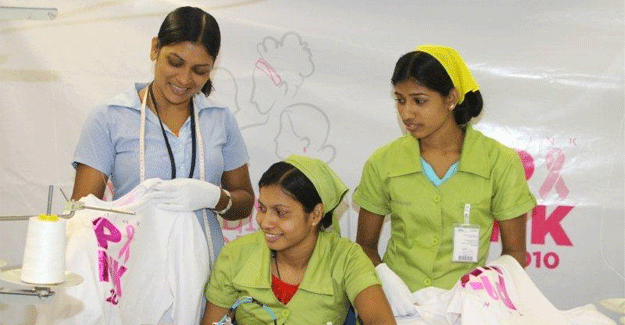Recent Hot Spots On China's Cotton Yarn Market
Recent Hot Spots On China's Cotton Yarn Market

Following are some major hot spots that are of concern to China's cotton yarn market players.
1. Price of cotton, cotton yarn, and cotton grey fabric have been volatile Price of cotton in China climbed up after the Spring Festival, and went up even more in April, affected by cotton reserve sales policy and rising cotton futures, up by around 1,000yuan/mt since April. Increase in cotton yarn prices was smaller than cotton, up by around 360 yuan/mt since April, higher at 1,000 yuan/mt in some plants. But price of cotton grey fabric remained largely stable. Weavers saw apparently shrinking profit, and some even shut down for holiday temporarily to handle the accumulating cost. Therefore, price uplift of cotton and cotton yarn lacked continuity without support from cotton grey fabric market.
2. Inventory of cotton yarn and cotton grey fabric slowly moved up but remained low. Spinners and weavers witnessed decreasing orders in May compared with April, resulting in rising inventory of finished goods. Inventory of cotton yarn declined rapidly in April and once touched the lowest level since 2015 but slowly piled up later. Stocks of cotton grey fabric also dipped to low levels in April and increased slowly at the end of April. Inventories are expected to increase in the coming weeks.
3. Reduction speed of orders is slower than past years. Trading volume of cotton grey fabric in Shaoxing Textile City can reflect downstream demand indirectly. By convention, trading volume of cotton grey fabric in Shaoxing Textile City hikes in March, peaks in April and declines gradually in May, but trading volume did not reduce apparently in May this year, and the speed was slower than the same period of last year.
4. Transactions of reserved cotton are high and spinners successively use reserved cotton for production. Transactions of reserved cotton were only around 60 kt last year, but reached around 379.7 kt this year by May 19. Trading price of reserved cotton was higher than anticipated, and was stable. Market players show higher confidence this year, but real downstream demand improvement has been limited. Weavers in some regions witness dramatically decreasing orders this year.
But why is demand for domestic cotton yarn better than last year? On one hand, arrivals of imported cotton yarn declined in March-May, especially carded 32S, and price of imported cotton yarn is higher than domestic yarn, so many weavers are using domestic cotton yarn, resulting in rising demand for domestic carded 32S; on the other hand, many market players held bearish view of the cotton auction policy. Delayed cotton reserve sales intensified replenishment demand. Thus, demand for cotton yarn rose periodically. But demand for domestic cotton yarn may reduce in June, and prices may slide down.



 textileexcellence
textileexcellence 







